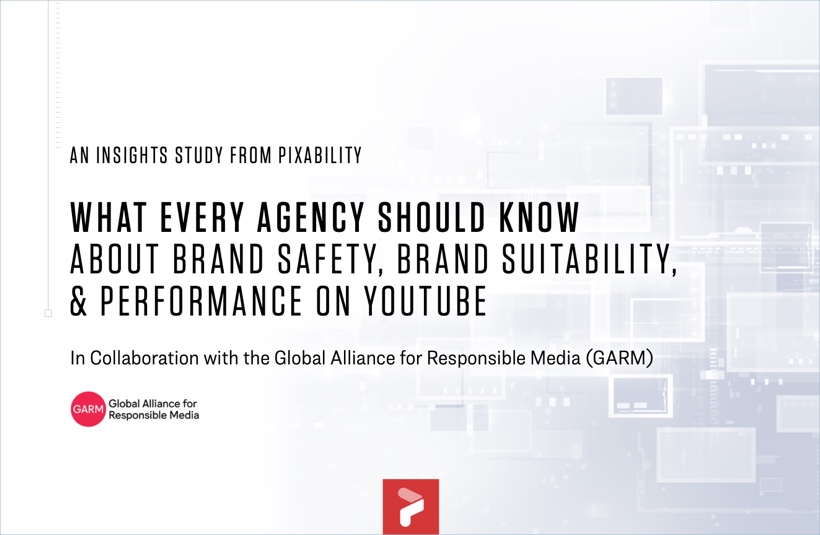-
New Pixability-GARM Study Provides Insights About YouTube Brand Suitability
A new study released by Pixability and GARM (the Global Alliance for Responsible Media) has found that although 99% of YouTube campaign impressions are considered “brand safe,” approximately one-third of these impressions can still be unsuitable for particular advertisers. The new Advertising Insights Study, “What Every Agency Should Know About Brand Safety, Brand Suitability & Performance on YouTube” is based on 20,000+ YouTube campaigns that ran on YouTube in the first six months of 2021. DoubleVerify’s brand safety measurement provided further input to the study.
The study first seeks to distinguish between brand suitability and brand safety, as well their impact on campaign performance. GARM has developed a framework for identifying 11 topics that can be considered objectively harmful. On these dimensions, which align with YouTube’s own monetization policies, GARM reported in April, 2021 that YouTube is 99% safe for advertisers.Brand suitability goes beyond brand safety in looking at further, sometimes more subjective considerations for what type of content one advertiser might seek adjacency to vs. what another advertiser might seek. The report notes that these “nuanced” considerations could be whether a single swear word is spoken in a piece of content. This alone could mean one advertiser would consider the content unsuitable, while another advertiser might consider content with multiple swear words to still be completely suitable.
The report explains how GARM is applying the concept of “risk” to YouTube impressions, to help advertisers better understand whether these impressions should be considered unsuitable. An example the report cites is a music video by the Beastie Boys which contains “harsh language.” This would be considered by GARM as “Brand Safe, but Medium Risk.” If an advertiser is amenable to medium risk content, then placing an ad next to this music video would still be acceptable.
The report further details 5 common ways a video can be safe but not suitable (misaligned risk level, controversial influencer, misaligned tone or subtopic, brand mention and made for kids content) and then shares specific examples of each.
The report goes on to discuss different approaches currently used to measure brand safety and suitability and how these affect ad performance (excessive keyword blocking, blocking whole content categories, and contextual targeting to only certain content categories). The report finishes up with 9 key takeaways that agencies should understand when they are managing YouTube campaigns.
Overall, the report is highly meaningful as the video/TV landscape continues to evolve, content/influencers get edgier and consumers take more control over their media consumption. All of these, and more, are escalating the complexity of advertisers’ decision-making. The report can be downloaded here.
If you are interested in learning more, in the context of connected TV advertising, please consider attending VideoNuze’s CTV Advertising Brand Suitability Summit (virtual) on November 16th and 17th. It is the first and only CTV advertising industry event that is 100% focused on all aspects of brand safety and suitability, including the integral role of Diversity, Equity and Inclusion. Pixability, FreeWheel, Mediaocean and Roku are currently on board as sponsors. I’m also really proud to have GroupM, Horizon Media and UM on board as Agency Partners. I anticipate announcing more sponsors and Agency Partners soon.
All registrants will be entered to win a 50-inch Roku TV and Smart Soundbar, generously provided by Roku. The Summit promises two unique afternoons of learning and networking that will help elevate our collective understanding of these critical topics.Categories: Advertising, Brand Safety and Suitability
Topics: DoubleVerify, Pixability, YouTube


